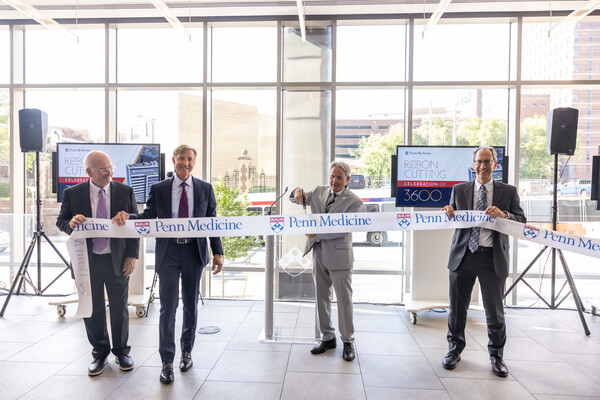
Image: Kindamorphic via Getty Images
Before Marilyn Jordan Taylor was dean of the Weitzman School, from 2008 to 2016, the professor of architecture and urban design was an architect and partner at Skidmore, Owings & Merrill (SOM), working on a range of transportation projects from international airports around the world to regional train stations and subway projects in the U.S. As part of her practice, Taylor led the SOM design team working on all 23 railroad stations along the Northeast Corridor, a highly-traveled passenger rail route between Washington, D.C., and Boston. The biggest by far was Pennsylvania Station’s new Moynihan Train Hall, in New York, a dramatic addition to Penn Station which officially opened on New Year’s Day 2021.
Infrastructure projects are often described by the time it takes to build them, and the expansion of New York’s Pennsylvania Station was no exception. To address the decades of disrepair and overcrowding, SOM proposed a design that included a new train hall in the James A. Farley Building, an historic post office built as part of the 1913 Pennsylvania Station, when trains were the primary mode for distributing U.S. Mail. The project stalled for more than a decade before it was revived, as a first step in a much larger project to expand Penn Station for the increasing growth in regional and commuter rail ridership. The new train hall is named for Senator Moynihan, the project’s most essential champion.
“I never saw the late, great Pennsylvania Station. It opened in 1913 and was demolished in 1963,” says Taylor. “The original ticketing hall was styled after the classical Baths of Caracalla in Rome, while the train hall was a soaring space of steel and glass, filled with daylight that guided passengers to the train platforms.”
“As we began designing spaces for the 21st century, there was a strong contingent of advocates who said the answer was to rebuild it to what it once was,” she says. “And of course, we checked with Senator Moynihan, and said we understood that the station’s history was important, but that didn’t make sense to do that. The senator quickly agreed. We understood that our responsibility was not to bring back that station, sadly demolished, but to bring back the extraordinary sense of dignity and civic pride it offered to all those traveling there.”
Taylor sees a possibility that the U.S. could turn a corner on its approach to rail travel in general. “When I came to Penn, [Emeritus Professor of Practice] Bob Yaro and I created a series of studios to propose and advocate high-speed rail in the Northeast Corridor. We wanted to support the need for infrastructure and put high-speed passenger back on the table even though the Obama administration probably wasn’t going to be able to get it all done. Together, Bob and I assembled a team of professional advisors to work with our students to make the case for high-speed rail,” she says.
“There are people of vision who are willing to find a way to take on these big problems, but they have to pick their moment carefully and strategically. And there are moments when we succeed. Infrastructure isn’t just stimulus and jobs. It also brings resilience, equity, inclusion—all of those things that we need to do if we want to build greater equity across the country for everybody.”
This story is by Jared Brey. Read more at Weitzman News.
From the Weitzman School of Design

Image: Kindamorphic via Getty Images

nocred

nocred

(From left) Kevin B. Mahoney, chief executive officer of the University of Pennsylvania Health System; Penn President J. Larry Jameson; Jonathan A. Epstein, dean of the Perelman School of Medicine (PSOM); and E. Michael Ostap, senior vice dean and chief scientific officer at PSOM, at the ribbon cutting at 3600 Civic Center Boulevard.
nocred